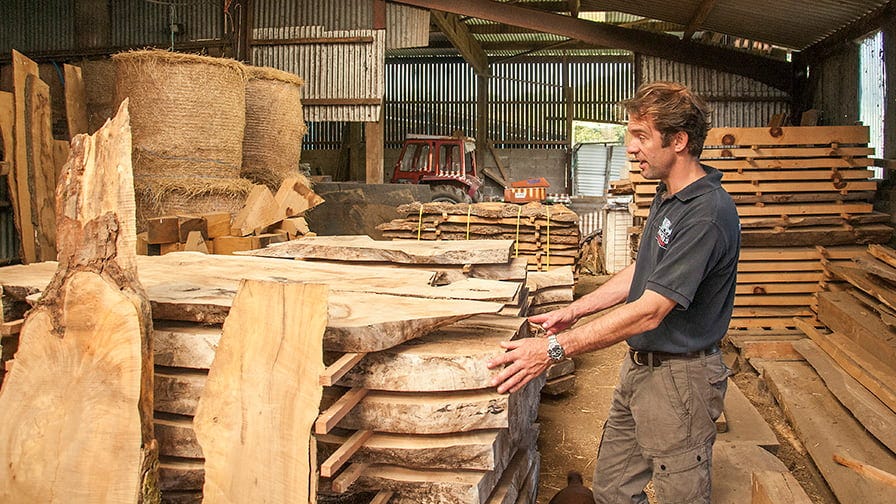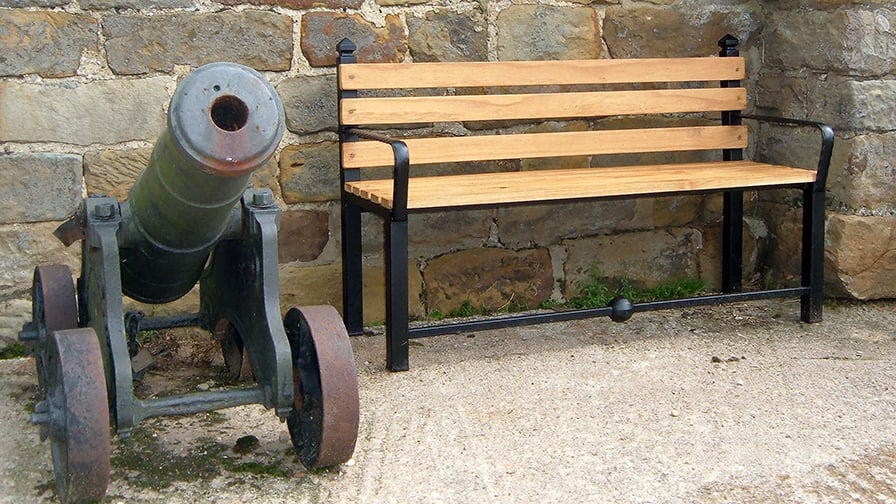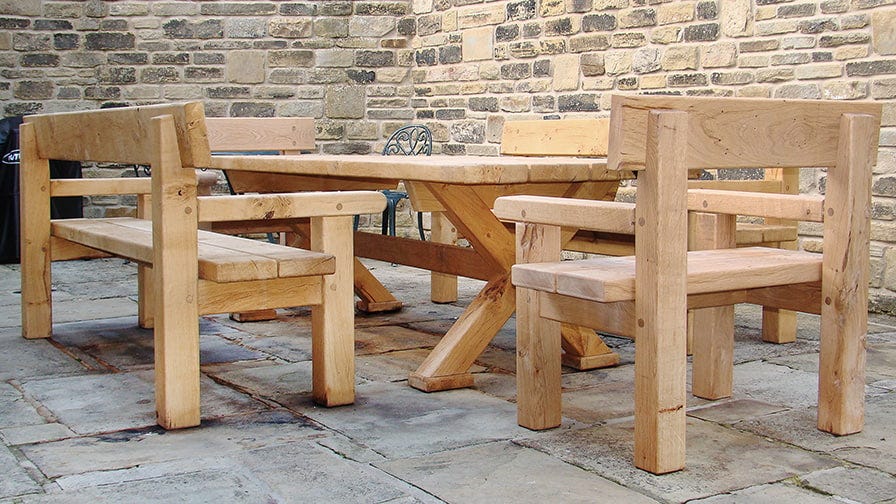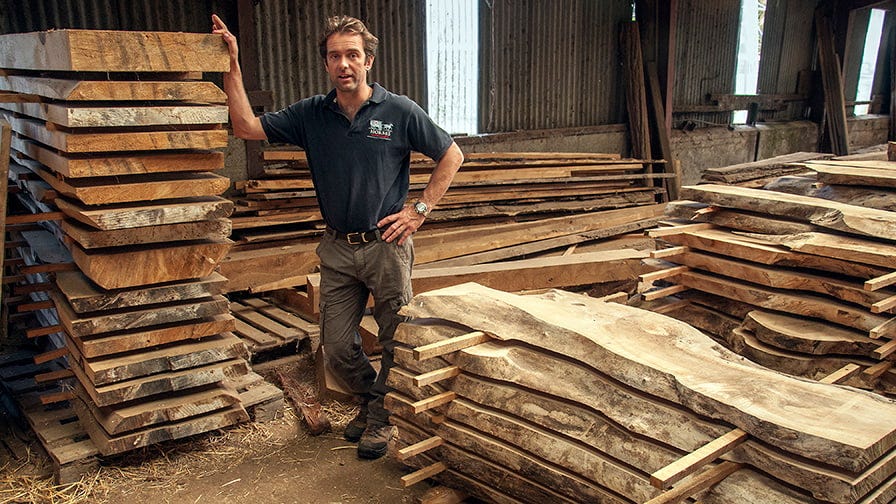UK Farmer Uses LT20 Sawmill to Boost Profits
By Wood-Mizer, Europe

Henry Brown has worked the Grange Farm with his father and is now a sole proprietor in Rosedale Abbey for just over 20 years. On the 300-acre farm located in the heart of the North Yorkshire Moors, Henry and his wife manage 400 mule breeding sheep, 1,200 pigs, horses, two B&B cottages, and timber business.
"I have such a varied job description," Henry laughs. "Whether it is managing the cottages, the farming side, the timber side, every day is different!" However, a diversity of avenues to keep the farm profitable was not always the case.
"As a young man, it's a great idea to spend your days farming, running around on quad bikes, tractors, and it all seems great fun," recalls Henry. "The next minute, you have a wife and children! And suddenly, it was appearing [to us] that a hill farm was not going to generate the income that our family required."
In the early 2000s, Henry and his wife began looking into supplement farming with other ways to raise their profits.
"[Profitability] while farming is a common problem, certainly up in these areas," Henry shares. "I have two or three friends that also have diversified – one into steel fabricating and another into stone. I wanted to make sure that when I diversified into something else, that it was love, and not just because I had to do it." His wife Jane had always wanted to run a B&B and holiday cottage. Together, they remodeled an old barn into a charming B&B, which they rent out to people looking to get away from the bustle of city life.
Henry had gone through a forestry apprenticeship at the nearby Castle Howard and decided that he could make a go of producing timber. During the training, he had worked for a year with a Wood-Mizer LT40 sawmill. This way, he contacted Wood-Mizer for a sawmill that he could get started with on a low budget. The result was the basic but competent LT15 sawmill.
"People are shocked when they see what [the sawmill] turns out, what it can produce," Henry shares. "It was good to start with a mill like the LT15 to open up the marketplace, without having to spend vast amounts of money not knowing what the return would be. We started up slowly, just processing some oak locally for people. And it's grown ever since."
The timber market can be challenging to get into, as established sawmill companies often have very loyal customers. Henry differentiated his services for consultations and deliveries on weekends and is open to trying anything to achieve the client's goals.
"We get a lot of different projects put in front of us," shares Henry. "And we never have the attitude of, 'Oh, that can't be done.' I like a challenge!"
"We have a varied client base, which I love – everyone from builders, architects, landscape gardeners, all the way to your weekend woodworking enthusiast." Clients visit, inspect the logs that Henry keeps in stock and browse dried timber to find the perfect piece they are looking for to complete a project.
"There was one chap who came and ordered a large load of ash – nothing unusual about that," Henry relates. "But it was for 10mm by 75mm strips… He was building coracle boats! He folds and intertwines the ash around." 75% of the timber Henry processes is oak, in addition to larch and silver birch.
"Most customers like to know where their new lintel or garden furniture is coming from," says Henry. "We like to source our timber locally. For example, I acquired a beautiful piece of sycamore that used to be destined for chopping and burning, but I milled it. It had stunning grain timber with stunning character in it. Here, there is no waste."
After several years, Henry decided to upgrade to a larger, mobile LT20 sawmill.
"I wanted to start to push the business on," Henry recalls. "I had a herd of Aberdeen Angus cows, which were inside six months a year and were not generating a vast profit. I sat down and decided I would rather grow my timber business. Selling the herd allowed the introduction of the LT20, and it has certainly produced a larger profit yearly than the herd had."

"Being able to go out and do mobile milling has helped grow the business," explains Henry. "We are not on the main route, so that ability to go mobile sawmilling did open up our name. We also revamped the website, and it helped dramatically. In this last year, I have been astounded at how busy we've been!"
Adding a kiln to dry timber for indoor projects has helped expand what he can offer clients.

"My love is with the small interior and exterior finishes; that's where I see the business going over the years," says Henry. "That is an area I would like to develop – showing wood off in its true, natural look. The great thing is, with this type of sawmill, you can do that. There are so many angles that you can mill a piece of timber on it. For a wedding, we cut oblique disks because we could stand the log up and cut slices from it."





With the timber business expanding, Henry is considering hiring someone full-time to manage the farm for him, freeing him to focus on the timber side, which is his passion.
To others interesting in doing what he has done, he shares the following advice - "If you are going to buy a sawmill, know the direction that you are going to take it in. When I started here, we focused on the oak route, nothing else." He mentions that although they have received requests, they have turned down work for post-and-rails and flooring, choosing to focus and grow their niche for tailored projects for specialist clients.
More information: www.grangefarmtimber.com







